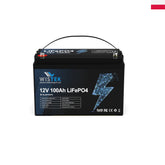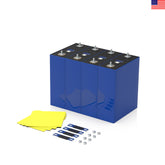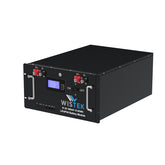What Is the Highest Voltage Achievable in DC Systems
Understanding the maximum voltage possible in DC systems is crucial for engineers, designers, and technicians working across a variety of industries. From consumer electronics to industrial power grids, DC systems are everywhere. As demand for high-power applications continues to rise, so does interest in how high DC voltages can safely and practically go. In this article, we will explore the scientific, engineering, and regulatory factors that influence the upper voltage limits of DC systems, providing you with an in-depth understanding of this complex yet fascinating topic.
- The Basics of Voltage in DC Systems
- Factors That Determine Maximum Voltage in DC Systems
- Maximum Voltages in Different DC Systems
- Technological Innovations Expanding Voltage Limits in DC Systems
- Safety Challenges in High Voltage DC Systems
- Regulatory Standards Governing DC Systems
- Applications That Push the Limits of DC Systems
- Future Trends in DC Systems Voltage Levels
- Comparative Table of Maximum Voltages in DC Systems
- Environmental Impact of High Voltage DC Systems
- Economic Considerations of High Voltage DC Systems
- Frequently Asked Questions About DC Systems Voltage Limits
- What Is the Maximum Voltage Possible in DC Systems
The Basics of Voltage in DC Systems
What Is Voltage in DC Systems?
Voltage in DC systems refers to the electrical potential difference between two points where current flows in one constant direction. Unlike AC, where voltage alternates polarity, DC maintains a steady voltage level.
Common Voltage Levels in DC Systems
Low voltage: 5V to 48V (used in electronics and telecommunications)
Medium voltage: 48V to 400V (used in electric vehicles, data centers)
High voltage: 400V to 1500V (used in industrial applications, renewable energy)
Ultra-high voltage: above 1500V (used in HVDC power transmission)
Factors That Determine Maximum Voltage in DC Systems
Dielectric Breakdown
One of the primary limiting factors in DC systems is dielectric breakdown. This occurs when the insulating material between conductors fails, causing a short circuit. Materials have specific dielectric strengths that limit how much voltage they can withstand.
Arc Flash and Arcing
At high voltages, DC systems are prone to arc flash events. DC arcs are more stable and longer-lasting than AC arcs, making them more dangerous and challenging to interrupt.
Heat Dissipation
Higher voltages often lead to increased heat generation. Efficient thermal management is essential to prevent system failure.
Insulation Requirements
As voltage increases, insulation materials must be thicker and of higher quality to prevent leakage and ensure safety in DC systems.
Regulatory Standards
Government regulations and international standards set maximum allowable voltages for different DC systems to ensure safety and reliability.
>>See also How to Navigate Everything You Need to Know About Group 41 Batteries
Maximum Voltages in Different DC Systems
Consumer Electronics DC Systems
Maximum voltage: Typically 5V to 20V
Applications: Smartphones, laptops, tablets
Safety is a primary concern; hence, low voltages are used.
Automotive DC Systems
Maximum voltage: Up to 800V
Applications: Electric vehicles (EVs), hybrid cars
Higher voltages allow for faster charging and better efficiency.
Industrial DC Systems
Maximum voltage: 1500V to 3000V
Applications: Heavy machinery, robotics, manufacturing lines
Requires specialized insulation and safety protocols.
Renewable Energy DC Systems
Maximum voltage: 1500V (common for solar arrays)
Applications: Solar farms, wind turbines, energy storage
Higher voltages reduce transmission losses.
High Voltage DC (HVDC) Systems
Maximum voltage: Up to 1100kV
Applications: Long-distance power transmission, intercontinental grids
HVDC offers lower losses over long distances compared to AC.
Technological Innovations Expanding Voltage Limits in DC Systems
Advanced Insulation Materials
Modern polymers, ceramics, and composite materials offer higher dielectric strength, enabling higher voltages in DC systems.
Solid-State Circuit Breakers
These devices can interrupt high-voltage DC currents more safely and rapidly than traditional mechanical breakers.
Superconducting Materials
Superconductors reduce electrical resistance to nearly zero, allowing for more efficient high-voltage DC systems.
Improved Cooling Technologies
Liquid cooling, heat pipes, and phase-change materials help manage the thermal challenges of high-voltage DC systems.
Safety Challenges in High Voltage DC Systems
Contact Hazards
Direct contact with high-voltage DC lines can result in severe or fatal injuries due to continuous current flow.
Equipment Failure
Failure of one component in high-voltage DC systems can lead to cascading failures if not properly isolated.
Emergency Shutdown
Designing reliable emergency shutdown mechanisms is more complex in high-voltage DC systems than in AC counterparts.
Regulatory Standards Governing DC Systems
IEC Standards
The International Electrotechnical Commission (IEC) provides global standards for DC systems covering safety, testing, and performance.
IEEE Standards
The Institute of Electrical and Electronics Engineers (IEEE) offers detailed guidelines for designing and operating high-voltage DC systems.
National Codes
Countries have specific electrical codes that set maximum allowable voltages for residential, commercial, and industrial DC systems.
Applications That Push the Limits of DC Systems
Space Exploration
Spacecraft often use high-voltage DC systems to minimize weight and maximize efficiency. Voltages can exceed 300V.
Data Centers
Modern data centers experiment with 380V DC systems to improve power efficiency and simplify power distribution.
Undersea Power Cables
HVDC cables transmitting power under oceans operate at voltages as high as 500kV to 1100kV.
High-Speed Rail Systems
Electric trains frequently use DC systems with voltages between 1500V and 3000V for efficient propulsion.
Future Trends in DC Systems Voltage Levels
Ultra-High Voltage DC (UHVDC)
Technological advances are pushing UHVDC systems to operate at up to 1100kV, with experimental systems aiming for 1200kV or more.
Distributed Energy Resources (DER)
Home solar systems and microgrids are increasingly adopting higher-voltage DC systems for efficiency and scalability.
Electric Aviation
Future electric aircraft may require DC systems operating at several kilovolts to power high-capacity motors efficiently.
Comparative Table of Maximum Voltages in DC Systems
|
Application |
Voltage Range |
|
Consumer Electronics |
5V - 20V |
|
Electric Vehicles |
400V - 800V |
|
Industrial Equipment |
1500V - 3000V |
|
Solar Energy |
Up to 1500V |
|
HVDC Transmission |
500kV - 1100kV |
|
Experimental UHVDC |
1100kV - 1200kV |
Environmental Impact of High Voltage DC Systems
Reduced Transmission Losses
Higher voltage DC systems enable more efficient long-distance power transmission, reducing energy waste.
Smaller Right-of-Way Requirements
HVDC lines require fewer towers and smaller corridors than equivalent AC lines, reducing environmental disruption.
Integration of Renewable Energy
High-voltage DC systems facilitate the integration of remote renewable energy sources into the grid.
>>See also Best Way to Charge Lithium Golf Cart Batteries Effectively
Economic Considerations of High Voltage DC Systems
Capital Costs
Building high-voltage DC systems requires significant upfront investment in specialized equipment and infrastructure.
Operational Savings
Lower transmission losses and improved efficiency offer long-term operational savings.
Maintenance Requirements
While generally reliable, high-voltage DC systems require highly skilled personnel for maintenance and repair.
Frequently Asked Questions About DC Systems Voltage Limits
Why can DC systems achieve higher voltages than AC in some cases?
DC avoids issues like skin effect and reactive power, making it more efficient at ultra-high voltages.
Are there physical limits to DC systems voltage?
Yes. Material science, insulation, and arcing phenomena impose practical voltage limits.
Can home systems safely use high-voltage DC?
How do DC systems compare to AC systems at high voltage?
DC systems offer lower transmission losses and better control but are more complex and expensive to manage.
What Is the Maximum Voltage Possible in DC Systems
Understanding what is the maximum voltage possible in DC systems requires a multi-faceted examination of science, technology, safety, and economics. While consumer devices operate at very low voltages, industrial and utility-scale DC systems can safely handle voltages ranging from a few hundred volts to over 1100kV. As technology continues to evolve, we can expect DC systems to achieve even higher voltages, unlocking new possibilities in renewable energy, transportation, and global power distribution. Ultimately, careful design, robust safety protocols, and adherence to international standards ensure that DC systems can safely operate at these impressive voltage levels.
























Leave a comment
All blog comments are checked prior to publishing